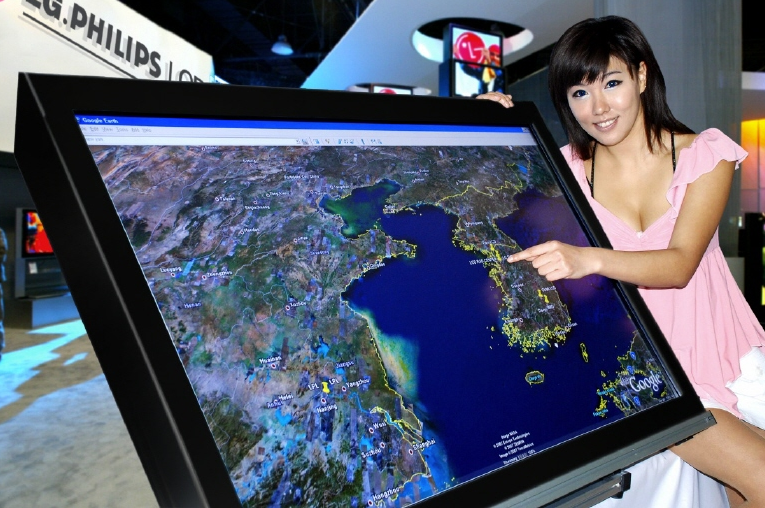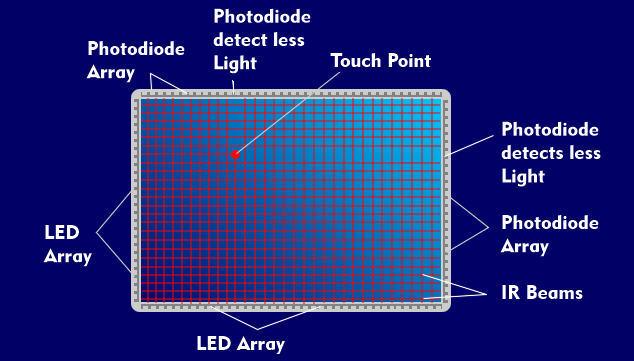multitouch
Multi-touchscreens are touchscreens that recognize multiple touches simultaneously. A distinction is made between technologies that recognize two touch points, dual touch, and those that simultaneously recognize multiple touch points, even from multiple people: multi-touch and multi-user touchscreens.
Multi-touch screens present an interactive user interface, a Natural User Interface( NUI) that interacts in response to finger movements. While a normal touchscreen responds to the touch of a finger or pen, multi-touchscreens respond to multi-finger input. Multi-touchscreens are distinguished between touchscreens that detect two touch points simultaneously and others that detect more than two fingers, so that several people can work together on a larger multi-touchscreen at the same time. Examples of multi-touch screens include the iPhone and other smartphones, notebooks, the HP TouchSmart, large displays such as Microsoft Surface, and others.
In multi-touch screens, the display layer and the input layer are usually on top of each other. The user sees the display and can change it by finger movements on the pane above the display layer. This advantage becomes particularly clear with graphic displays, since the operator can rotate, move, enlarge and reduce graphics by finger movements and spreading.
The sensor technologies used in multi-touch screens are based on light reflection, capacitive, resistive or infrared methods, or work with optical imaging. A best-known light reflection-based technique for large screens is Frustrated Total Internal Reflection( FTIR), others are Diffused Illumination( DI), Diffused Surface Illumination( DSI), Planar Scatter Detection ( PSD) and Integrated Through Screen Optics ( ITSO). As far as capacitive processes are concerned, Projected Capacitive Touch( PCT), as well as Surface Capacitive Technology and the Mutual Capacitance process, should be mentioned as further developments.
In the processes with light reflection, the refractive index between two media is changed and the light reflection reaches the outside, where its position is determined by a camera. In other processes, the multi-touchscreen is equipped with a sensor network, and still others work with optical sensors on the left and right edges of the screen to determine the finger positions.


